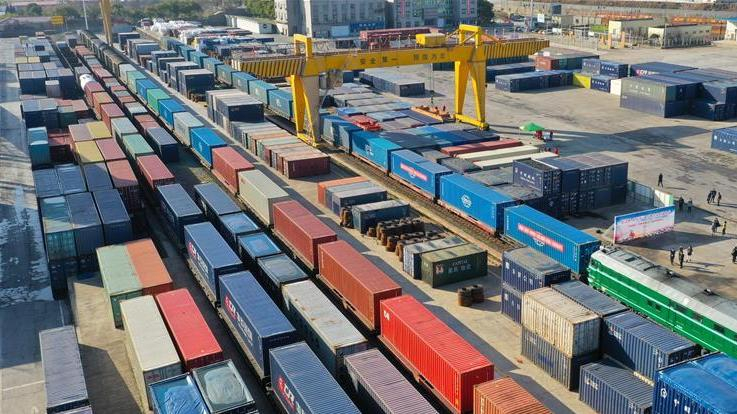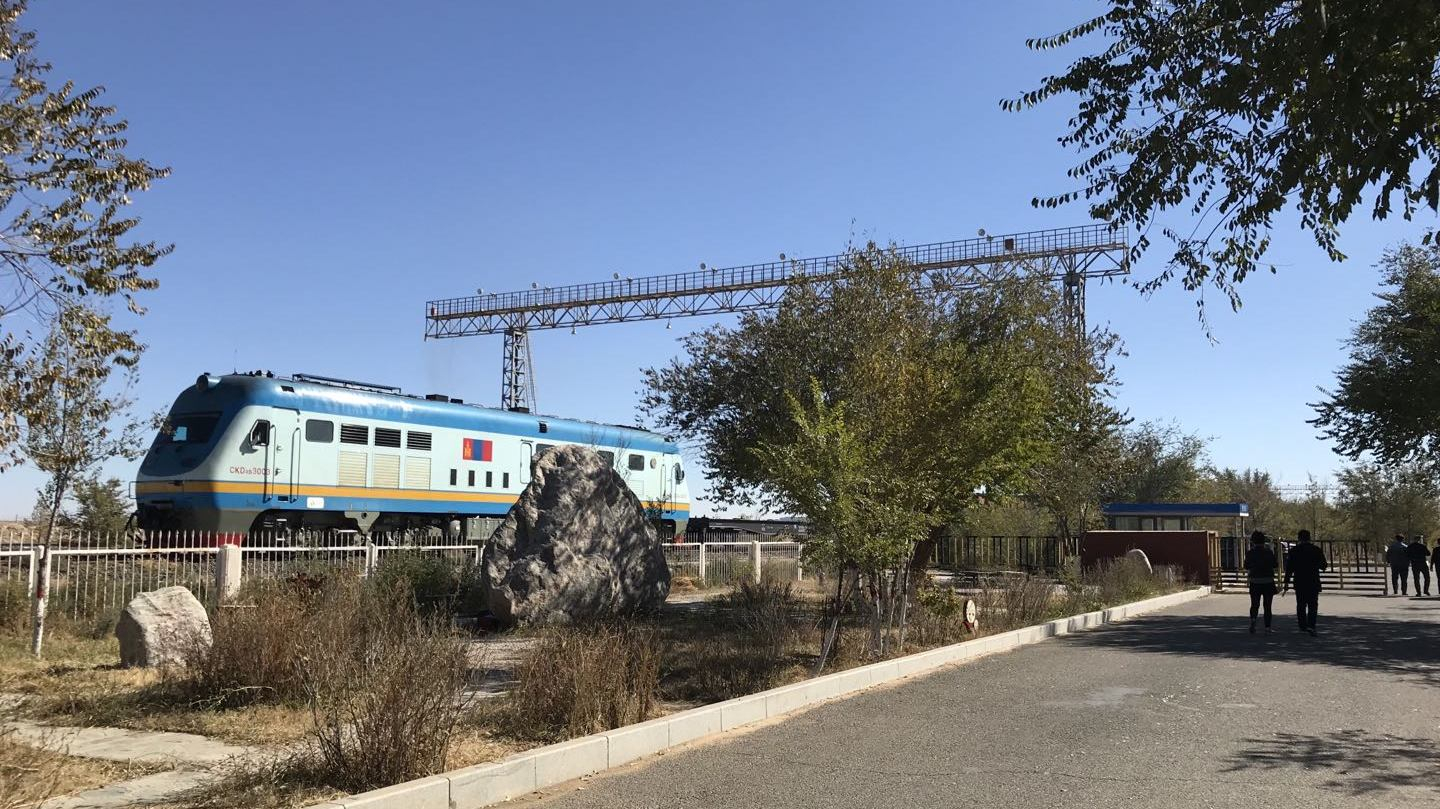
The China-Europe freight train waiting for departure at Xiangtang railway port in Nanchang, east China's Jiangxi Province, February 17, 2020. /Xinhua
The China-Europe freight train waiting for departure at Xiangtang railway port in Nanchang, east China's Jiangxi Province, February 17, 2020. /Xinhua
Editor's note: Tom Fowdy is a British political and international relations analyst and a graduate of Durham and Oxford universities. He writes on topics pertaining to China, the DPRK, Britain, and the U.S. The article reflects the author's opinions, and not necessarily the views of CGTN.
Xinhua News Agency reported on February 21 that the total volume of freight transported on China-Europe international trains expanded by 8.1 percent since the beginning of the year, amounting to 8.67 million tons of cargo, marking a 1.5 percent increase year on year. Director of international business for the China-Europe rail service Ma Hongying stated that the railway, originally conceived in 2011 as part of the Belt and Road Initiative, "played a crucial role in facilitating international logistics and developing foreign trade."
The growing success of the line appears to stem from a recent development from a month ago, which saw the railway line open a new route towards Poland's Baltic Sea port of Gdansk on a service now coined as "The Baltic train," a twice a week operation. The line has slashed the journey time from China to the Polish port from 40 days to 12 days, intensifying the pace of goods delivery between Britain and Scandinavian countries. The port is operated by the Polish company Adampol, which is now in talks with a number of automobile and timber manufacturers eager to expand their business on the route.
This is a true Belt and Road success story. The China-Europe railway is a growing, long term and strategic investment which has handled a continental wide logistical problem, breaking down barriers and bringing countries together. What the Gdansk example illustrates is that this is not a one-way street for China's benefit or a "debt trap" but something that it is actively enhancing opportunities and capabilities of companies in Europe without political strings attached. This should not be interpreted as anything else other than a massive win for Poland's economy, cementing it as a facilitator of European trade.
Eurasia is the world's largest landmass, with each end being staggeringly far apart. From a trade perspective, to get heavy cargo (thus excluding aviation) from one side to the other is deeply challenging and time consuming, as its shape and geography actively works as a hindering factor. Traditionally, if you want to ship goods from Asia's East Coast to Europe you are forced to "go round it" going all the way through the Indian ocean, up through the Red Sea, the Suez canal and then through the Mediterranean and past the Iberian peninsula. Alternative routes concern going all the way around Africa, or the even longer journey of across the Pacific, through the Panama Canal and then the Atlantic. There is no easy option.

A China-Europe freight train passes from Mongolia to China through the border in Erenhot City, Inner Mongolia Autonomous Region, October 16, 2018. Xiong Tong/CGTN
A China-Europe freight train passes from Mongolia to China through the border in Erenhot City, Inner Mongolia Autonomous Region, October 16, 2018. Xiong Tong/CGTN
These circumstances are why China, through its Belt and Road Initiative, conceived the "China-Europe" railway or the "New Eurasian land bridge," a freight route which aims to cut through these maritime trade obstacles by spanning across the vast Eurasian landmass, vastly reducing transit times between East and West. The project commenced in 2011 and spans across Kazakhstan, Russia, Belarus and westwards in Europe originally terminating at the German city of Duisburg. As it has taken shape, it has added an increasing number of local branches to the main route which has connected it to a growing number of European cities, with recent additions including Madrid, Spain (2016), and Barking, United Kingdom (2017) and Istanbul, Turkey (2019).
Thus on January 20th this year, a new freight route was opened directly linking the central railway to the Polish port city of Gdansk, making it the first port to become part of the project. This grants Poland the capability to receive cargo directly from China, Russia and other countries along the way and subsequently redistribute it to other nations in Europe. Cameron Thorpe, CEO of Deepwater Container Terminal, stated of the initiative: "This is proof that sea and land transport can develop and coexist harmoniously, strengthening the position of the Port of Gdansk and DCT Terminal as the Northern Gate for the fastest growing region in Europe."
What does the development tell us? It tells us that the primacy beneficiary of this development is not so much China but in fact Poland itself, which illustrates the Belt and Road Initiative is not a one-sided, Sino-centric project designed to "exploit" other countries as portrayed by the media and American officials, but instead serves to enhance business prospects within Eurasia. The port-rail link massively enhances Poland's role as an exporter and hub of transit and massively increases the options for a number of sectors.
As a whole, the Belt and Road Initiative is about connecting Eurasia and breaking down barriers to trade which in turn delivers mutual benefits for participating countries. This is not about geopolitics or domination; this is about sustaining mutual and interdependent economic growth and creating new opportunities, with the example of the Gdansk port being a primary example. Thus the growth in freight numbers is not just China's benefit, but that of a continent.
(If you want to contribute and have specific expertise, please contact us at opinions@cgtn.com)